For your convenience, this is a professionally-curated shopping list of supplies that I personally recommend for the long-term health and wellbeing of your new pet corn snake, as well as your own peace of mind. In other words, the shopping has basically been done for you! 😉
Because many pet corn snakes are purchased as tiny, shoelace-like babies, this page is divided into two parts: a shopping list for housing young corn snakes, and a shopping list for housing older individuals.
If you want to know why a certain product is on this list, or why a pet snake needs so much stuff, make sure to read the rest of this care manual!
Disclaimer: ReptiFiles’ reptile kits contain some affiliate links, which means I receive a small portion of the purchases, at no additional cost to you. These proceeds keep the information on ReptiFiles free. Thank you for your support! For details, check out my official affiliate disclosure.
(And don’t worry — I never endorse products that I don’t like.)
Baby Corn Snake Starter Kit
This shopping list is for young corn snakes <24″ / 61cm long. Baby corn snakes should be assumed to be as flexible as Houdini himself and require special care in enclosure security. Additionally, keeping them in a smaller enclosure when they’re young can help you keep better track of their health and wellbeing.
This setup is not suitable for housing corn snakes long-term!! Eventually you will need to upgrade to an “adult” setup (as detailed in the next section), so budget accordingly. The nice thing about this starter kit is that it will give your snake enough room to be comfortable while you work on setting up its “real” enclosure.
- Repti Zoo 34 Gallon 24″x18″x18″ Glass Terrarium (RK series)
- Zoo Med Naturalistic Terrarium Hood, 12″
- Exo Terra Daytime Heat Lamp, 60w
- Basking branch, 22-25″
- Arcadia T5 SO ShadeDweller UVB kit
- ~6500K T5 HO fluorescent daytime lamp, 34″
- Zoo Med Digital Thermometer & Humidity Gauge, x2
- Zilla Power Center 24/7 Digital Timer
- Exo Terra Mister
- Zoo Med Eco Earth substrate, 34+ quarts
- Leaf litter
- Small caves/hide boxes, x2
- Environmental enrichment
- Medium water bowl
- Soft-tipped feeding tongs
- Digital kitchen scale
- Rescue RTU veterinary disinfectant
- Spray bottle (for disinfectant)
Standard Corn Snake Starter Kit
If you started with the above baby corn snake starter kit, good news — many of the things you purchased for that “kit” can still be used for an adult corn snake!
- 4’x2’x2′ front-opening enclosure
- Zoo Med Mini Combo Deep Dome Dual Lamp Fixture
- Zoo Med Repti Tuff Halogen Lamp, 50w (x2)
- Basking branch, 26-46″
- Arcadia T5 SO ShadeDweller Max UVB kit
- Arcadia LED Bar, 34″
- Zoo Med Digital Thermometer & Humidity Gauge, x2
- Zilla Power Center 24/7 Digital Timer
- Exo Terra Mister
- Zoo Med Eco Earth substrate, 60+ quarts
- Leaf litter
- Small caves/hide boxes, x2
- Environmental enrichment
- Large water bowl
- Soft-tipped feeding tongs
- Digital kitchen scale
- Rescue RTU veterinary disinfectant
- Spray bottle (for disinfectant)
Keep in mind that everything should be purchased and set up BEFORE you get the snake. This will save you a lot of stress, and does your new pet a big favor, too.
I also recommend finding an experienced reptile veterinarian in your area. It’s always better to do a little bit of research when nothing’s wrong than to find yourself in a panic when your pet gets sick. You can find a list of top-rated reptile vets in ReptiFiles’ Vet Directory!
Corn Snake Buying Guide
A “normal” corn snake can typically be purchased for around $25 in the US. Morphs (non-wild type colors and patterns) tend to be more expensive from that point.
When buying a corn snake, it’s always best to purchase from a breeder than from a pet store, as you’re more likely to get a healthy animal from the former. Better yet, adopt a corn snake from a rescue or your local classifieds — corn snakes are severely overbred, so buying a “used” reptile can help reduce demand and discourage unnecessary breeding.
Don’t commit to buying the snake before you’ve had a chance to see and handle it. As it’s in your hands, look for:
- Scars
- Missing scales
- Retained shed (tip of tail and eye caps)
- Mites (tiny black dots, lifted scales)
- Clear mouth and nostrils (bubbles/blockage may indicate RI)
- Breathing (wheezing or clicking?)
- Muscle tone (should feel strong and muscular, if you hold it halfway down body and let hang, should be strong enough to lift head and climb back onto hand)
- Weight/shape (should not be able to see spine (too skinny) or have fat “hips” (sign of obesity)
- Vent (old poo? Mites? Swelling?)
- Spine, visual and tactile check (looking for kinks/deformities)
Also get as much information from the breeder/previous owner as possible:
- Morph, known het traits
- Sex
- Hatch date
- Feeding habits (live vs frozen thawed, prey size, mice vs rats, etc.)
- Last feed
- Temperament
- Previous health issues
- Previous sheds/shed issues
- Last shed date
If you decide to buy the animal, ask the seller not to feed it prior to pick-up. This will prevent any possible regurgitation from relocation stress.
Looking for a great corn snake breeder? Visit ReptiFiles’ partner, the HappyDragons Marketplace, to browse breeders with top-notch ethics and husbandry.
